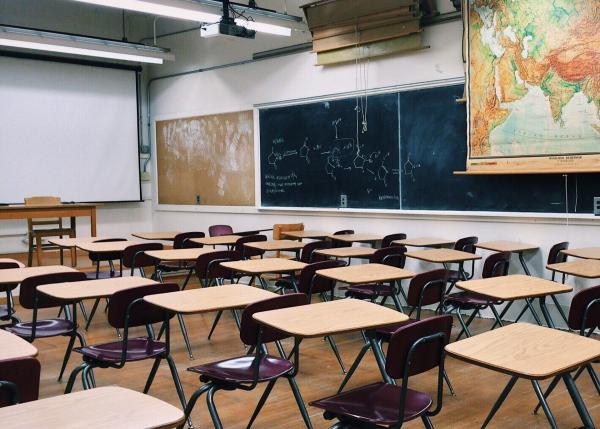For a large part, our schools have been closed for just over a year. Initially, the CDC recommended six feet of social distancing to reopen. Given the built infrastructure, that meant at best hybrid learning with children attending actual classes alternating days with virtual ones. As with all things COVID-19, the recommendation was based on limited information, tempered by “an abundance of caution,” and the decisions by the states on whether and how to follow that guidance varied. Researchers took advantage of that variance in Massachusetts to conduct a “natural” experiment. Was three feet of distance as safe as six?
The researchers gathered information from the plans submitted by individual schools to Massachusett’s Department of Elementary and Secondary Education (DESE), identifying those requiring three feet or more and six feet or more distance between pupils. All pupils in Massachusetts were required to wear masks. DESE data also included reporting on those pupils and staff with laboratory-confirmed COVID-19 and being present in school within seven days of that test. Community rates of COVID-19 infections were obtained from USAFacts, a non-profit founded by Steve Ballmer, formerly of Microsoft, to provide the public with official government data.
The results are based on 251 school districts, 90% of the total providing in-class education – 540,000 students, 100,000 staff. There were additional variations amongst the schools in terms of enrollment, students required to travel in cohorts or “pods,” and ventilation and disinfection protocols.
- Districts implementing >3 feet reported 895 student and 431 staff cases
- Districts implementing >6 feet reported 3223 student and 2382 staff cases
 The risk of a COVID-19 infection was 11% less in districts implement >3 feet of social distance for students and staff
The risk of a COVID-19 infection was 11% less in districts implement >3 feet of social distance for students and staff- The degree of community spread did correlate with the incidence of infections among students and staff, depicted in this graph. But when controlling for community spread, the >3 feet distance continued to be safer.
- Poverty, race, and ethnicity of the students did alter the incidence, further downward quantitatively (20%), but it was not statistically different the aggregate 11% decrease.
The study has limitations; counted cases were those reported to the state (which was mandated), the degree to which each district adhered to their own rules was unknown, and the data was not separated by grade.
“Increasing physical distancing requirements from 3 to 6 feet in school settings is not associated with a reduction in SARS-CoV-2 cases among students or staff, provided other mitigation measures, such as universal masking, are implemented.”
The change
Based on this study, the CDC has lowered social distancing in schools to >3 feet, along with continued masking. Did the CDC follow the science? In a word, yes. One year ago, the correct social distance to “flatten the curve” and reduce the case rate to not overwhelm the hospital's capacity to care for patients was unknown. Based on the best available data, primarily information on aerosols and air-borne spread at that point 80 years old [1], 6 feet was the rule. This more recent study shows that we can, in fact, reduce our distancing. When the facts changed, the CDC changed.
Did the CDC bow to political pressure? The answer to that will depend on the political lens you apply. Last March, when COVID-19 and its many unknowns were more feared, was the CDC’s judgment based on “an abundance of caution,” bending to the fears of influential teacher’s unions, or even some deep-state conspiracy to cripple our economy? Each of those narratives are stories we tell ourselves to make sense of our world. None of them are “true.” The old information resulting in a 6 feet rule has been replaced by better information that says 3 feet is no more dangerous. It was not a flip-flop either. It is what following science is all about.
“On Friday, Randi Weingarten, president of the American Federation of Teachers, the nation’s second-largest educators’ union, released a statement saying she would “reserve judgment” on the new distancing guidelines pending further review of research on how the virus behaves in school settings. Becky Pringle, president of the largest teachers’ union, the National Education Association, raised similar concerns.” New York Times
Policy is grounded in science but written by humans. The teachers may not be ready to return. As I have written previously, they never signed up for a job involving risk to their lives. And fear is far more an emotional response than an analytic one. For the most part, I would predict that schools will continue as they have for the rest of the school year. COVID-19 has cost the younger generation a year of education.
[1] The 6-foot social-distancing rule is based on nearly 80-year-old science. Scientists at MIT and Oxford have created a traffic-light system to use instead. Business Insider
Source: Effectiveness of three versus six feet of physical distancing for controlling spread of COVID-19 among primary and secondary students and staff: A retrospective, state-wide cohort study Clinical Infectious Diseases DOI: 10.1093/cid/ciab230




